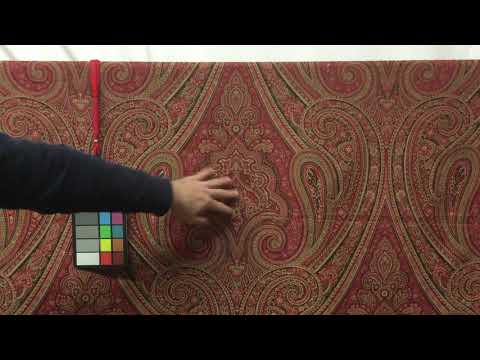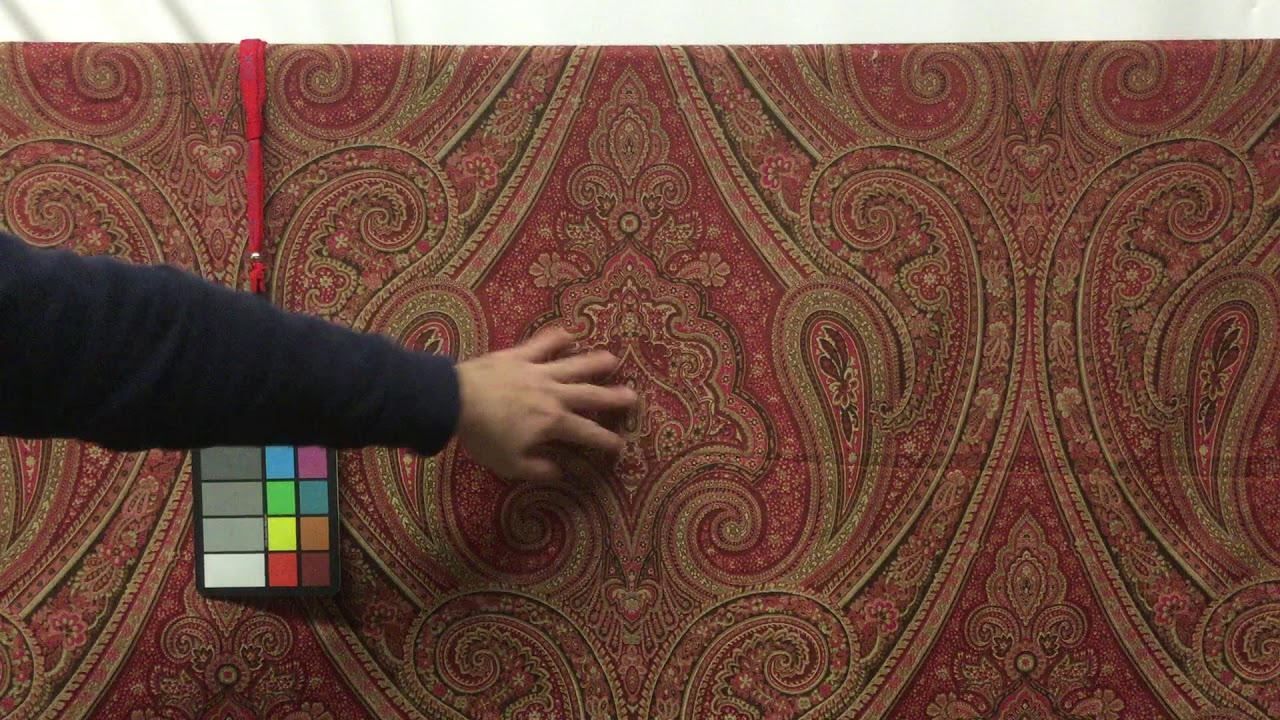Paisley upholstery fabric is the epitome of elegance and sophistication, adding a touch of timeless charm to any space. With its intricate design and rich colors, this fabric effortlessly transforms ordinary furniture into extraordinary works of art. The mesmerizing patterns, carefully woven into the fabric, create a visually stunning effect that captivates the eye and sparks curiosity. Paisley upholstery fabric not only enhances the aesthetic appeal of your furniture but also offers unmatched comfort and durability. Crafted with utmost precision and attention to detail, this fabric boasts exceptional quality, ensuring that it withstands the test of time. Whether used in traditional or contemporary settings, paisley upholstery fabric adds a touch of opulence and character, instantly elevating the ambiance of any room. Its versatility allows it to effortlessly complement a wide range of interior design styles, making it a perfect choice for those seeking both elegance and functionality. Transform your living space into a haven of style and sophistication with the exquisite beauty of paisley upholstery fabric. Experience the epitome of luxury and indulge in the allure of this timeless fabric that will undoubtedly leave you in awe.

The History of Paisley Upholstery Fabric
Paisley upholstery fabric is a timeless and classic choice for those looking to add a touch of elegance and sophistication to their home décor. With its intricate patterns and rich colors, paisley fabric has been a popular choice for upholstery for centuries. Let’s explore the history of this beautiful fabric and why it continues to be a favorite among homeowners and interior designers.
The Origins of Paisley
The origins of paisley can be traced back to ancient Persia, modern-day Iran. The term “paisley” comes from the town of Paisley in Scotland, where the fabric was first produced in the 19th century. However, the paisley pattern itself has a much longer history.
The paisley pattern is believed to have originated over 2,000 years ago in ancient Babylon. It was commonly used in Persian textiles and was known as the “boteh” or “buta” motif. The boteh pattern was traditionally a symbol of fertility and rebirth, and it was often used in religious and ceremonial textiles.
During the 17th and 18th centuries, the East India Company brought paisley fabric to Europe, where it quickly gained popularity among the upper classes. The intricate patterns and vibrant colors were seen as a sign of wealth and status. Paisley fabric was often used for upholstery, curtains, and clothing.
The Popularity of Paisley
In the 19th century, paisley fabric reached its peak popularity. The Industrial Revolution brought advancements in textile manufacturing, making paisley fabric more accessible to the middle class. It became a popular choice for upholstery and home décor, as well as clothing and accessories.
Paisley fabric was often used in Victorian homes, where it added a touch of opulence and luxury. It was commonly seen in grand drawing rooms, adorned with paisley-upholstered furniture and curtains. The intricate paisley patterns were seen as a symbol of taste and refinement.
Paisley in Modern Times
Today, paisley upholstery fabric continues to be a popular choice among homeowners and interior designers. Its timeless appeal and versatility make it a great option for various design styles. Whether you prefer a traditional, vintage, or contemporary look, paisley fabric can complement any aesthetic.
One of the reasons for paisley’s enduring popularity is its ability to add visual interest and depth to a space. The intricate patterns and rich colors create a focal point and can instantly elevate the overall look of a room. Whether used on a statement piece of furniture or as accent pillows, paisley fabric can bring a touch of elegance and sophistication to any space.
Caring for Paisley Upholstery Fabric
Proper care and maintenance are essential to ensure the longevity of your paisley upholstery fabric. Regular vacuuming and spot cleaning can help remove dust and dirt, preventing them from settling into the fabric. In case of spills or stains, it is important to address them immediately by blotting the area with a clean cloth and using a mild detergent or upholstery cleaner.
It is also advisable to avoid direct sunlight, as it can cause fading and discoloration over time. If possible, rotate and rearrange your furniture to minimize exposure to sunlight. Additionally, it is recommended to avoid sharp objects that may snag or tear the fabric.
Conclusion
Paisley upholstery fabric has a rich history and timeless appeal that continues to captivate homeowners and interior designers alike. From its ancient origins in Persia to its popularity in Victorian homes and its modern-day versatility, paisley fabric is a classic choice that can add elegance and sophistication to any space. With proper care and maintenance, paisley upholstery fabric can remain a beautiful and cherished part of your home for years to come.
Ravishing Raspberry: The Royal Paisley Fabric in 54-Inch Delight
List of Paisley Upholstery Fabric
Paisley Upholstery Fabric
| Pattern Name | Description | Color Options | Material | Usage |
|---|---|---|---|---|
| Classic Paisley | The classic paisley pattern is a timeless design that originated in Persia and gained popularity in the West during the 18th century. It features intricate teardrop-shaped motifs arranged in a symmetrical manner, exuding elegance and sophistication. | Various color options available, including rich jewel tones, earthy neutrals, and vibrant pastels. | Typically made from high-quality fabrics such as silk, velvet, or jacquard to enhance the luxurious feel. | Perfect for adding a touch of opulence to formal living rooms, dining areas, or traditional-style furniture. |
| Contemporary Paisley | Modern interpretations of paisley patterns have emerged, catering to the evolving tastes of interior design enthusiasts. These contemporary designs often feature larger motifs, bolder color combinations, and experimental variations of the classic paisley shape. | Contemporary paisley fabrics embrace a wide range of colors, from monochromatic schemes to vibrant and eclectic palettes. | Manufactured using durable materials like polyester or blended fabrics, ensuring longevity and resistance to wear and tear. | Perfect for adding a touch of playfulness and personality to contemporary and eclectic interiors, including accent chairs, throw pillows, or curtains. |
| Outdoor Paisley | For those seeking to bring the paisley charm outdoors, outdoor paisley upholstery fabric is the ideal choice. These fabrics are specifically designed to withstand the elements, making them perfect for patio furniture, outdoor cushions, or sun loungers. | Outdoor paisley fabrics offer a range of color options, including fade-resistant and UV-stable dyes to maintain their vibrancy even under direct sunlight. | Constructed from weather-resistant materials such as polyester blends or solution-dyed acrylics, ensuring resistance to mold, mildew, and fading. | Perfect for creating a stylish and comfortable outdoor seating area, adding a touch of elegance to your patio or poolside space. |
As an expert in upholstery fabrics, I highly recommend considering paisley upholstery fabric for your interior design projects. Whether you prefer the timeless appeal of classic paisley, the boldness of contemporary interpretations, or the durability of outdoor options, paisley fabrics offer versatility and aesthetic charm. With a wide range of colors, materials, and patterns to choose from, paisley upholstery fabric allows you to create a truly personalized and captivating space.

